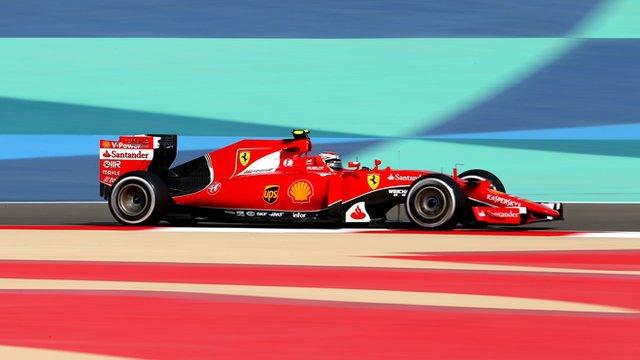Ferrari: How they became 2015 F1 title contenders
- Published
- comments
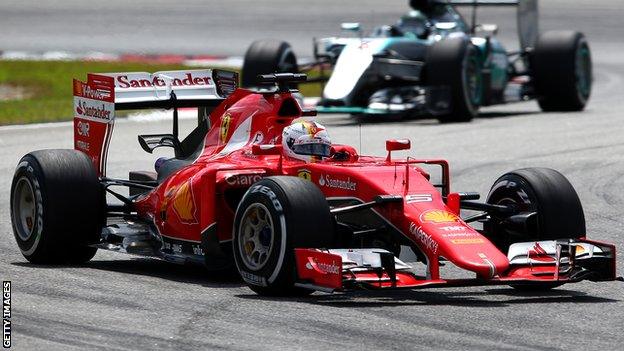
Sebastian Vettel insists there is still a gap between Ferrari and Mercedes
By Andrew Benson, Chief F1 Writer |
Sebastian Vettel has been doing his best to talk down Ferrari's chances of mounting a title challenge against Mercedes so far this year.
The German says there is "still a bit of a gap" between the two teams and that it will "take a while before we are a decent match".
But Vettel is kidding no-one, least of all Mercedes.
Ferrari have been a serious threat at each of the last three races, beating them at one. They have finished on the podium at all four grands prix so far this season, and Vettel's team-mate Kimi Raikkonen split the Mercedes drivers in the last race in Bahrain.
"We didn't see it in pre-season testing or at the first race," says Mercedes F1 boss Toto Wolff.
"But since then every race has been a step forward from Ferrari. Their rate of development has been very impressive over the winter and the last three races. That is quite a challenge for us."
It is a remarkable turnaround, coming as it does after 2014, when the Italian team had their worst season in 21 years, scoring only two podiums.
And while Mercedes driver Lewis Hamilton has a relatively comfortable 27-point advantage at the head of the championship after an almost perfect start to the season, Vettel is just one point behind the Englishman's team-mate Nico Rosberg.
So how have Ferrari gone from also-rans to title contenders in the space of a few months?
How much have Ferrari improved?
Last year, Ferrari's performance was so bad that Fernando Alonso finally ran out of patience after five years of battling against the odds and decided that, to get a title-winning car in the relatively near future, he had to go elsewhere, even if it meant taking a temporary step backwards.
In hindsight, Alonso's decision was clearly a mistake. But it's not hard to see where the Spaniard, now at struggling McLaren-Honda, was coming from.
Alonso came agonisingly close to winning the title with Ferrari in both 2010 and 2012, despite an inferior car to eventual champion Vettel's Red Bull. He won at least one race in each of his first four seasons at Maranello and finished second in the championship three times in his first four years.
Prancing horsepower |
|---|
Estimated race power difference between Mercedes and Ferrari - 2014: 50bhp; 2015: 0bhp. (total power output approx 880bhp) |
In 2014, Alonso managed just two podium finishes - a third place in China and a second in the wet/dry race in Hungary. He finished sixth in the championship.
Through that season, Ferrari's average lap-time deficit to the fastest Mercedes car in qualifying was 1.22 seconds.
The power-unit - which was about 50bhp off the Mercedes and had an under-effective and inefficient hybrid system that was a particular handicap in races - accounted for about two-thirds of that, with the remaining 0.4secs due to the chassis, which is predominantly to do with aerodynamics.
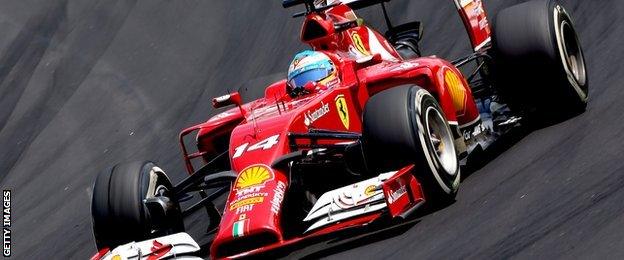
Alonso managed just two podiums in last year's underpowered Ferrari...
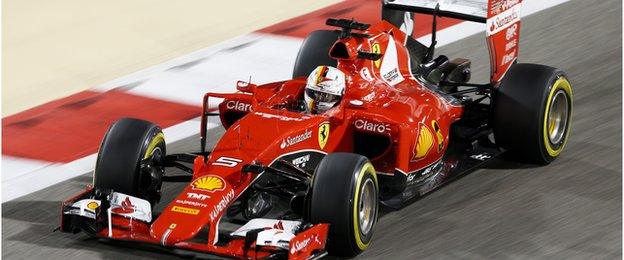
...but in 2015 the Scuderia have emerged as genuine title contenders
This year, Ferrari's average qualifying deficit to the fastest Mercedes is 0.705secs, but in the races it is nowhere near that. Indeed, it has been as good as negligible in two of the four races this year.
Much of the progress is down to the engine - Ferrari have added 65bhp to their V6 turbo hybrid already, with more to come. Mercedes - despite suggestions last year of an extra 50bhp for 2015 - have found more like only 15-20bhp at best.
Judging by the speed-trap figures, Mercedes probably retain a small power advantage. But only very small.
Prancing horsepower |
|---|
Estimated Ferrari power gain from 2014-15: 65bhp |
To all intents and purposes, then, any difference in lap time between the Ferrari and the Mercedes is probably down to the chassis, the driver and the difference in the two cars' behaviour on the tyres. They are close enough that, if Ferrari get everything right, Mercedes are beatable.
Tyres are a key factor here. The Ferrari is more gentle on its tyres, a characteristic it has retained for many years.
This gives it an advantage in races, in that it can run for longer at closer to its maximum potential. But it is a disadvantage in qualifying, as it is harder to get the tyres up to full working temperature before the start of a lap.
That means the Ferraris, for now, are qualifying behind at least one of the Mercedes. Which makes their races more difficult because, with delicate tyres making it hard to follow another car closely, track position is a critical advantage.
How much of Mercedes' advantage is actually Hamilton?
Analysing the two teams' comparative performance in qualifying last year and this is not quite a like-for-like comparison.
Last year, Rosberg out-qualified Hamilton 11 times to seven, so more often than not the fastest Mercedes was the German's.
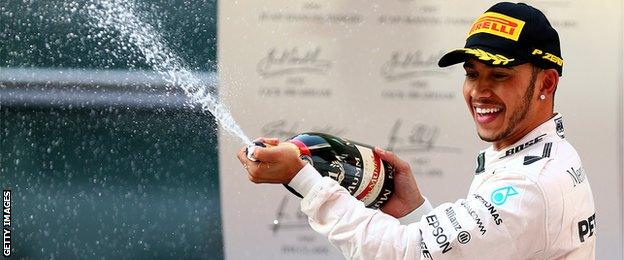
Hamilton's driving makes Mercedes' advantage look bigger than it actually is
This year, Hamilton has upped his game and has scored four poles out of four. And Ferrari's average qualifying deficit to Rosberg is only 0.214secs.
Taking the Briton out of the race results also makes interesting reading.
Rosberg has two second and two third places so far this season, which is an average position of 2.5. But the average of the best result of the Ferrari drivers at each race is slightly better, at 2.25.
Which suggests that a fair chunk of Mercedes' overall advantage so far this year is in Hamilton himself.
Another factor is that Alonso - who out-qualified Raikkonen by more than 0.5secs on average and 16-3 overall - is no longer in the Ferrari. Vettel's advantage over the Finn is just over half that so far. Where Alonso would be qualifying and racing this year's Ferrari can only be a matter of speculation.
How have Ferrari improved?
When Hamilton met Vettel: The interview
Ferrari have undergone a major restructuring in the course of the last 18 months - including some major blood-letting of senior engineering staff at the end of last season.
Sacked were engine chief Luca Marmorini, engineering director Pat Fry, chief designer Nikolas Tombazis and tyre expert Hirohide Hamashima.
They paid the price for five years of failure and decline, which culminated in a 2014 car that was compromised from the start.
The chassis team asked the engine department for a number of features on the power-unit that would help them improve the car's aerodynamics.
This meant compromising the engine's performance because of restrictions imposed on packaging.
The aerodynamicists insisted this didn't matter, as they would make up the time loss and more in downforce. But they didn't. And given the much greater importance of the engine in the overall performance balance of the car in the new turbo hybrid formula, that was a major miscalculation.
Prancing horsepower |
|---|
Ferrari's average qualifying deficit to fastest Mercedes - 2014: 1.22secs; 2015: 0.705secs (to Rosberg, it is only 0.214secs) |
This year, those engine compromises have been largely removed - leading to a dramatic step forward in power. But the team have still managed to improve downforce as well.
Some of the changes to the engine layout have actually improved aerodynamics, and had other positive knock-on effects.
For example, they have allowed a more pronounced curve in the so-called 'coke-bottle shape' - or waisted bodywork - at the rear. This enhances rear downforce, the lack of which was a major failing in last year's car.
That has allowed the team to run more front downforce and keep the car balanced, which was not possible last year. And that in turn gives a more positive turn-in to corners - which is exactly the characteristic both Vettel and Raikkonen need in a car to give their best.
While the ultra-adaptable Alonso managed to drive around some of the car's problems last year, Raikkonen could not. With the new Ferrari's more benign behaviour, both the team's current drivers can access more of their own potential and therefore the car's as well.
Where is the biggest improvement?
Technical director James Allison - who joined in September 2013, and had no input on the 2014 car at the conceptual stage and little on its design at all - says that "in pure lap time, the gains are almost equal chassis to power unit".

Ferrari technical director James Allison has been credited with the team's upturn in form
But this is almost certainly a politician's answer. The Mercedes teams believe the Ferrari engine is now effectively their equal. So while the Ferrari chassis is clearly much closer to the absolute pace than in 2014, it remains the biggest contributor to Ferrari's much smaller overall deficit to Mercedes.
Ferrari's chassis improvements have come about through Allison changing the focus of the design group.
"I haven't designed a single piece of this car," Allison says. "There are a lot of very talented people who do that.
"If I have had any effect it is to try to say which bits are worth putting a lot of effort into, to try to make sure the pressure has been taken off people to deliver things for next week but to work with a slightly longer timescale in mind.
"It frees up your hand to do a good job. It is very hard to do anything in F1 on a two- to three-month timescale. You have to build up over months rather than weeks."
What next?
The million-dollar question, then, is how long will it take for Ferrari to close the performance gap to Mercedes to nothing.
Ferrari have what Allison calls "a fairly exciting development programme and a lot of performance to bring".
On the engine, another 15bhp or so is due soon - most likely for the Canadian Grand Prix in early June.
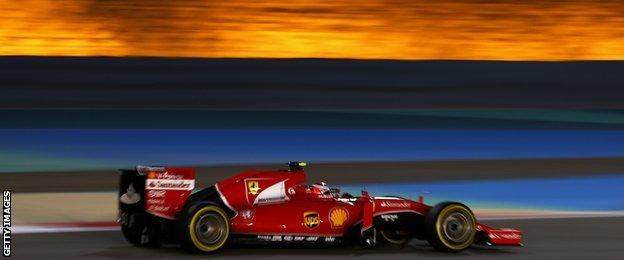
Ferrari also have more scope to improve their engine than Mercedes. Out of the permitted 32 development 'tokens' - ascribed to parts of the engine depending on their influence on performance - they have saved 10 to use during the season, while Mercedes have only seven, having applied more over the winter.
"We will be shunting performance on to car as quick as we can find it and make it," Allison says. "There's a bag load in the pipeline in the factory at the moment and that will get onto the car as soon as we can and there will be more coming after that.
Prancing horsepower |
|---|
Ferrari's estimated chassis performance deficit to Mercedes - 2014: 0.4secs; 2015: 0.2secs |
"The aero programme is performing strongly and these are still quite young aero rules, so I think we can expect more from it. Ditto the engine. And the whole situation with the tokens means it's a very different year this year compared with last year. Notwithstanding the gains we've made to date, we think we can bring a lot more during the year."
But Mercedes are not exactly going to be standing still. They, too, have significant upgrades coming on both car and engine.
"We have solid foundations in the team," Wolff says. "We have built an organisation that can be successful on a sustainable basis long term, with the challenge of Ferrari bouncing back very strongly."
He is about to find out whether he is right.
- Published2 May 2015

- Published10 May 2015
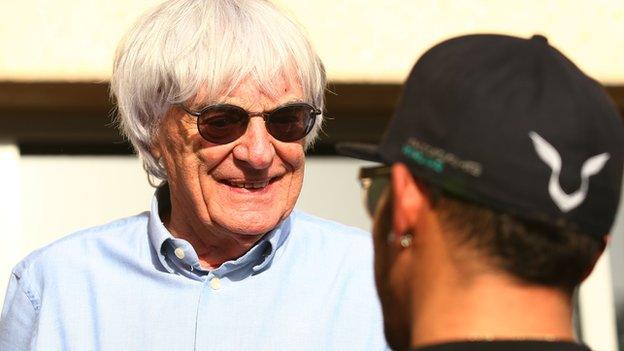
- Published30 April 2015

- Published24 April 2015
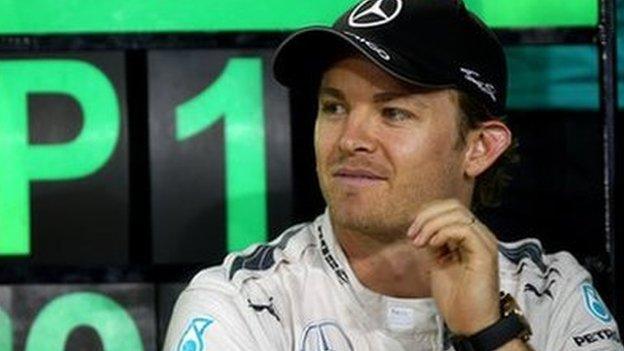
- Published17 April 2015

- Published18 April 2015
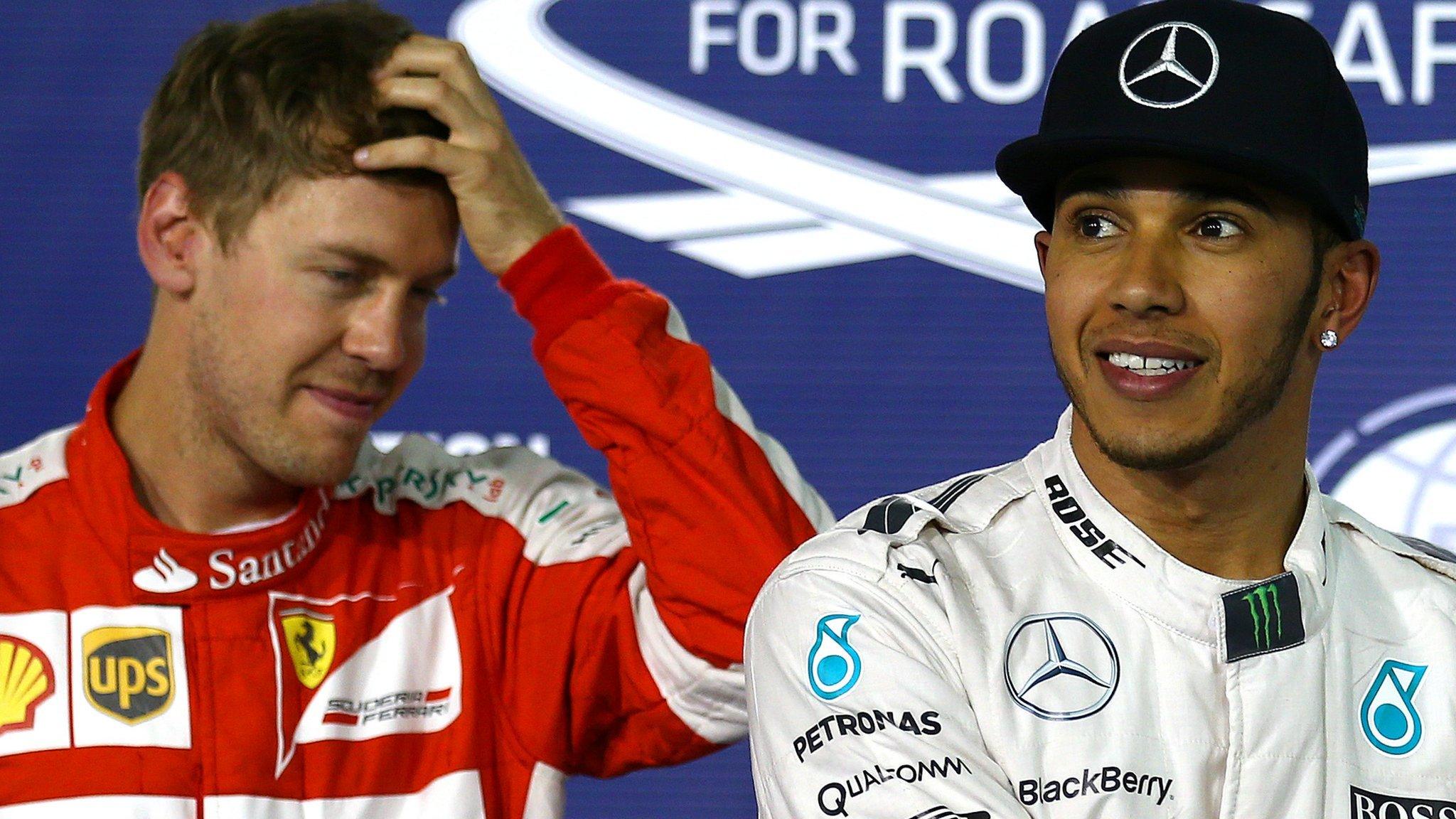
- Published17 April 2015
